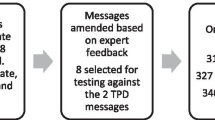Abstract
While the undeniable health risks of tobacco warrant attention, the substantial existing smoker base and potential challenges associated with mandatory cessation suggest that mitigating its impact is best approached through gradual reductions and awareness campaigns. In the Chinese context, e-cigarettes, as a harm-reduction alternative to traditional smoking, have stirred controversy. This study aims to uncover the reasons behind negative public perceptions of e-cigarettes in China and identify effective strategies for promoting local tobacco harm reduction by facilitating smoker transition. We employed qualitative and quantitative methods to collect and analyze public opinions on e-cigarettes and their users.
The study identified two primary reasons contributing to the negative public perception of e-cigarettes: online information with subjective guidance and the unfavorable impression of the e-cigarette subculture. Utilizing the Behavior Change Techniques (BCTs) and the Persuasive Systems Design (PSDs) framework, we identified design features aimed at shifting the social perception of e-cigarettes from being seen as ‘another kind of cigarette’ to serving as a medium for promoting healthy behaviors. Subsequently, a product solution was devised based on these findings.
Access this chapter
Tax calculation will be finalised at checkout
Purchases are for personal use only
Similar content being viewed by others
References
Jackson, S., Bullen, C.: UK report underscores potential of e-cigarettes to reduce smoking harms. The Lancet 400(10365), 1747–1750 (2022)
Ebrahimi Kalan, M., Brewer, N.T.: Longitudinal transitions in e-cigarette and cigarette use among US adults: prospective cohort study. Lancet Reg. Health - Am. 22, 100508 (2023)
Fogg, B.: A behavior model for persuasive design. In: Proceedings of the 4th International Conference on Persuasive Technology, pp. 1–7. ACM, Claremont (2009)
Brown, S.L., Asher, T., Cialdini, R.B.: Evidence of a positive relationship between age and preference for consistency. J. Res. Personal. 39(5), 517–533 (2005)
Halttu, K., Oinas-Kukkonen, H.: Susceptibility to social influence strategies and persuasive system design: exploring the relationship. Behav. Inf. Technol. 41(12), 2705–2726 (2022)
Oinas-Kukkonen, H., Harjumaa, M.: Persuasive systems design: key issues, process model, and system features. Commun. Assoc. Inf. Syst. 24 (2009)
Michie, S., et al.: The behavior change technique taxonomy (v1) of 93 hierarchically clustered techniques: building an international consensus for the reporting of behavior change interventions. Ann. Behav. Med. 46(1), 81–95 (2013)
Asbjørnsen, R.A., et al.: Combining persuasive system design principles and behavior change techniques in digital interventions supporting long-term weight loss maintenance: design and development of eCHANGE. JMIR Hum. Factors 9(2), e37372 (2022)
Asbjørnsen, R.A., et al.: Identifying persuasive design principles and behavior change techniques supporting end user values and needs in eHealth interventions for long-term weight loss maintenance: qualitative study. J. Med. Internet Res. 22(11), e22598 (2020)
Author information
Authors and Affiliations
Corresponding author
Editor information
Editors and Affiliations
Rights and permissions
Copyright information
© 2024 The Author(s), under exclusive license to Springer Nature Switzerland AG
About this paper
Cite this paper
Tu, X., Chen, H., Wang, J., Xin, X. (2024). Exploration of Design Intervention in Eliminating Bias: A Persuasive System Design Approach of Introducing Intermediate Scenarios. In: Stephanidis, C., Antona, M., Ntoa, S., Salvendy, G. (eds) HCI International 2024 Posters. HCII 2024. Communications in Computer and Information Science, vol 2114. Springer, Cham. https://doi.org/10.1007/978-3-031-61932-8_10
Download citation
DOI: https://doi.org/10.1007/978-3-031-61932-8_10
Published:
Publisher Name: Springer, Cham
Print ISBN: 978-3-031-61931-1
Online ISBN: 978-3-031-61932-8
eBook Packages: Computer ScienceComputer Science (R0)




